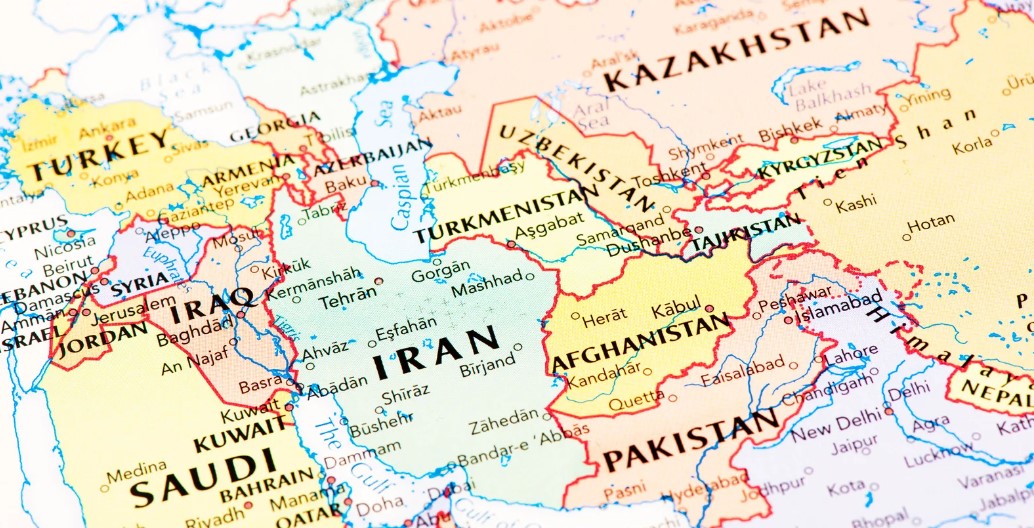Throughout the year, the mantra of “geopolitical risks” has gained relevance as conflicts and international relations have become increasingly tense. The situation in the Middle East has worsened following Israel’s ground invasion of Lebanon and Iran’s response, increasing the likelihood of a regional-scale conflict. The markets’ reaction has been, for now, lukewarm. However, three asset classes have been impacted by this heightened tension: oil, gold, and the dollar.
“Geopolitics is once again a concern. Iran attacked Israel yesterday afternoon, immediately impacting oil, which bounced nearly 6% from the day’s lows. Stocks suffered (S&P -0.9% and Nasdaq -1.5%) and gold surged 1%,” highlighted Juan José del Valle, head of analysis at Activotrade SV. Some investment firms believe there is a tendency to think that conflicts in the Middle East have a limited impact on U.S. stocks unless there is a significant escalation. According to Michaela Huber, cross-asset strategist at Vontobel, and Mario Montagnani, senior strategist at Vontobel, the market reaction was expected, with a risk-aversion movement. Investors shifted from riskier equities to safer fixed-income assets.
“Additionally, the VIX index—the fear barometer of Wall Street—jumped 15% this Tuesday. Meanwhile, the yield on U.S. 10-year Treasury bonds, which stood at 3.78% on Monday, dropped to 3.73% on Tuesday. The U.S. stock market closed ‘modestly’ lower following Iran’s attack. The S&P fell by less than 1%—from record levels—while the Nasdaq dropped 1.5%, managing a slight recovery by the close. Futures moved from flat to modestly positive,” the Vontobel experts explained.
According to Banca March, U.S. markets took profits following the news of missile launches, favoring the more defensive side of the market—utilities, duration, the dollar, and gold. “The main reaction has come from oil prices, which recovered to levels above $74/barrel for the Brent reference. As tensions in the region rise, Brent continues to gain ground, reaching $74.8/barrel, accumulating a 3.9% increase for the week. Meanwhile, gold fell from the highs reached in yesterday’s session and is now trading at $2,649/ounce. After hitting new highs yesterday amid Iran’s attack, the precious metal is down 0.5% this morning, awaiting employment data on both sides of the Atlantic. In the currency market, the dollar continues to advance against the euro, regaining its role as a safe-haven asset amid the tensions between Israel and Iran,” they noted.
Regarding oil, Vontobel experts explained that this market always reacts nervously when Iran is involved, but in the longer term, the supply-demand interaction tends to take precedence. They added that before the attack, oil had been under downward pressure, and unless the situation worsens further, a crisis similar to that of 2022 seems unlikely. “Still, the combination of increased geopolitical tensions and the prospect of more Chinese stimulus makes oil more attractive than it was a few weeks ago. Yesterday’s attack marked the second direct Iranian attack on Israel this year, suggesting that the conflict may have entered a more serious phase. In April 2024, Iran also attacked Israel, but an early warning and the nature of the weapons used (drones and slower missiles) ensured that almost all projectiles were intercepted. This time, Iran gave much less notice and used mainly ballistic missiles (which travel faster and are, therefore, harder to intercept),” said Huber and Montagnani.
The Contrast Between Oil and Gold
For Carsten Menke, Head of Next Generation Research at Julius Baer, the most significant impact has been in the gold market, where geopolitics continues to drive prices. “While oil seems to barely react to the increasing tensions in the Middle East, they are further fueling the bullish sentiment in the gold market. This is despite the fact that, historically, gold’s record as a geopolitical hedge is quite poor. Nevertheless, gold’s fundamental outlook is strong, with increased demand as a safe-haven asset due to the anticipation of further interest rate cuts and a potential adverse outcome in the U.S. presidential elections. Stretched speculative positions carry short-term pullback risks, which we would, however, see as long-term buying opportunities,” Menke pointed out.
In his view, considering the escalation of the conflict in the Middle East, the contrast between the oil and gold markets could not be more evident. “While oil remains at relatively low levels, gold has reached new historical highs in recent days. First, this is due to market sentiment, which is very depressed in the case of oil and very euphoric in the case of gold. As an indication of this, net speculative long positions in gold futures—i.e., bets on rising prices by speculative market participants, minus bets on falling prices—are approaching record highs. Second, this is due to the fundamental context. Demand for gold as a safe-haven asset has increased again over the summer in anticipation of further interest rate cuts by the U.S. Federal Reserve and other central banks,” the Julius Baer expert added.
Given this, Menke warned that historical evidence suggests that, rather than being a geopolitical hedge, gold is more of an economic hedge, as long as geopolitical tensions have economic consequences, as was the case during the Second Oil Crisis of 1979/80. “This assessment is also supported by the First Gulf War of 1991, which did not lead to a lasting rise in gold prices. Therefore, for now, we see the current escalation of tensions in the Middle East as another element driving the bullish sentiment in the gold market. As previously mentioned, the path of least resistance is upward, and we maintain our constructive view. Stretched speculative positions carry short-term pullback risks, which we would, however, view as long-term buying opportunities,” he concluded.




